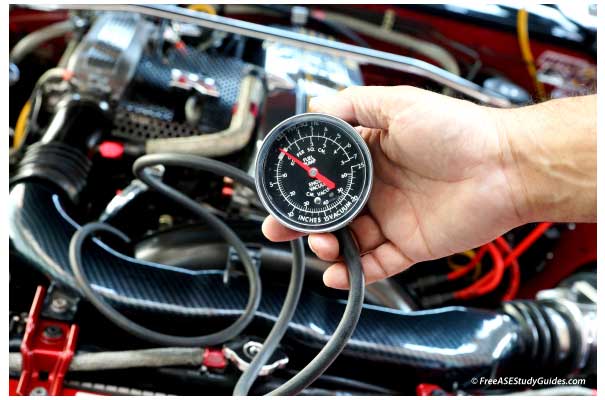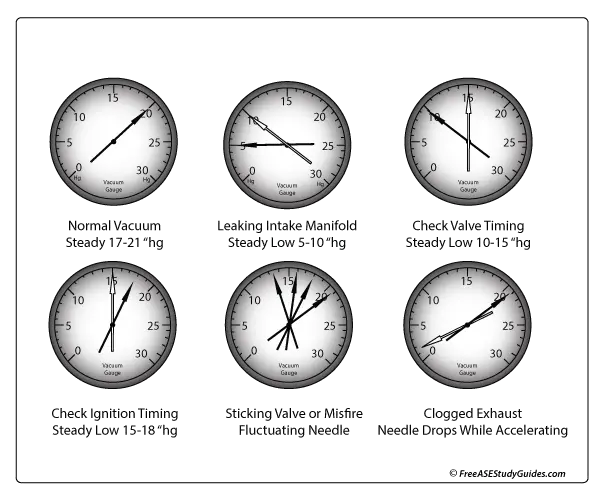Engine Vacuum Test

To check manifold pressure with a vacuum gauge, you need to locate a port on the intake manifold or throttle body. Manufacturers install ports on their manifolds for lots of different reasons: Brake Booster, PCV tube, EGR Switch, A/C vents. Find one small enough for the vacuum gauge line to slide onto firmly.
A quick snap of the throttle plate should drop the vacuum to around 5 "hg vacuum, and then it should recover to a steady 21 "hg vacuum; when air mixes with atomized fuel from the fuel injectors, the engine's speed increases. For every 1000 ft. of increase in altitude, 1 "hg is subtracted from the vacuum reading.

Normal Engine: On a good engine, accelerate to around 2000 RPM and then quickly release the throttle. The engine should snap right back to a steady 17- 21 "hg vacuum.
Steady low between 5-10 "hg vacuum: This indicates that the engine's intake manifold or the intake gasket is leaking. This leak should be easy to find because it will be making a loud, hissing noise.
Steady low between 10-15 "hg vacuum: This reading indicates late valve timing. There is a good chance the vehicle has jumped timing. Check the timing belt or chain, depending on the application.
Steady low between 15-18 "hg vacuum: This just low reading indicates retarded ignition timing. Advance the timing on the distributor to correct this problem.
Fluctuating Needle: A fluctuating needle indicates there is a problem with a valve or there is an engine misfire.
Needle drops during acceleration: If the needle drops steadily during acceleration, there is a restriction in the exhaust or intake. This is typically due to a clogged CAT or muffler.